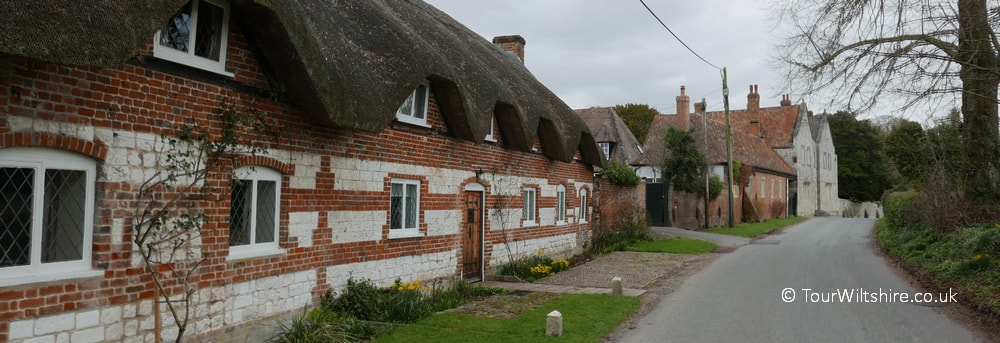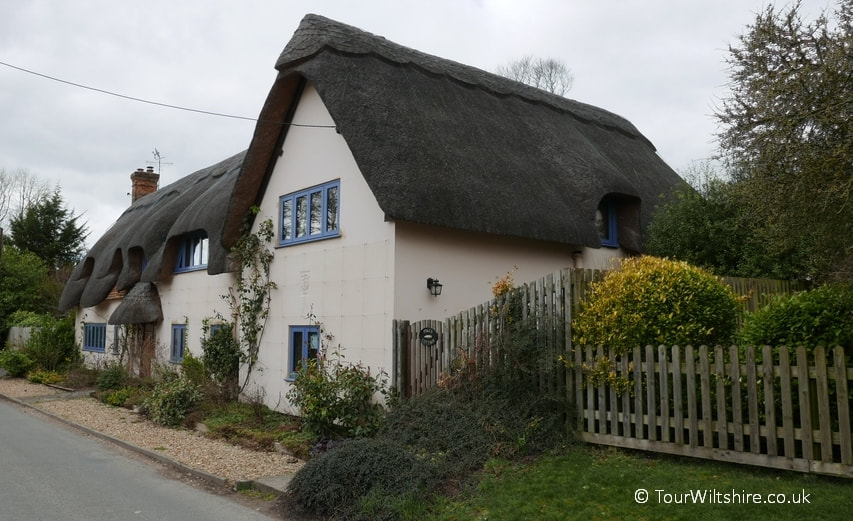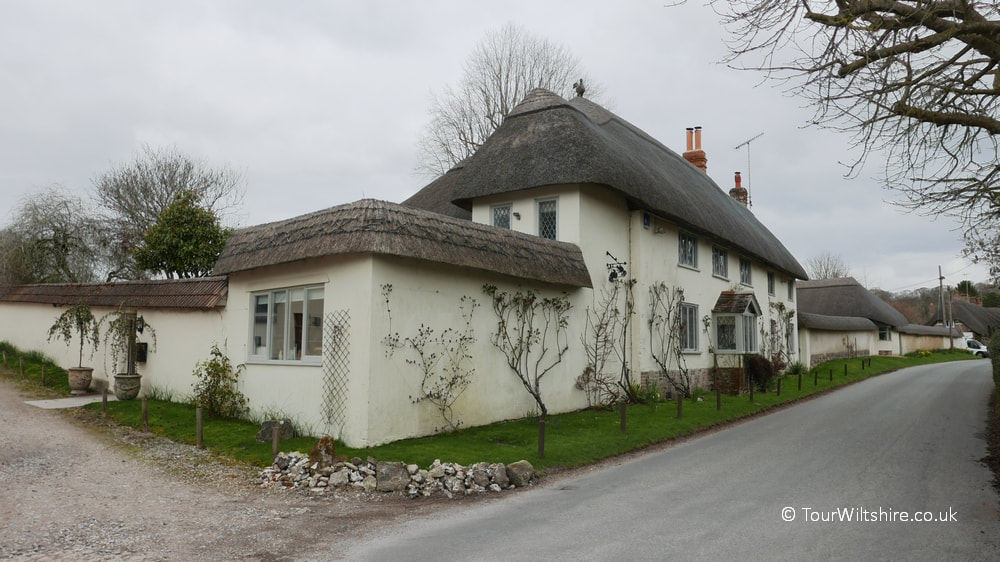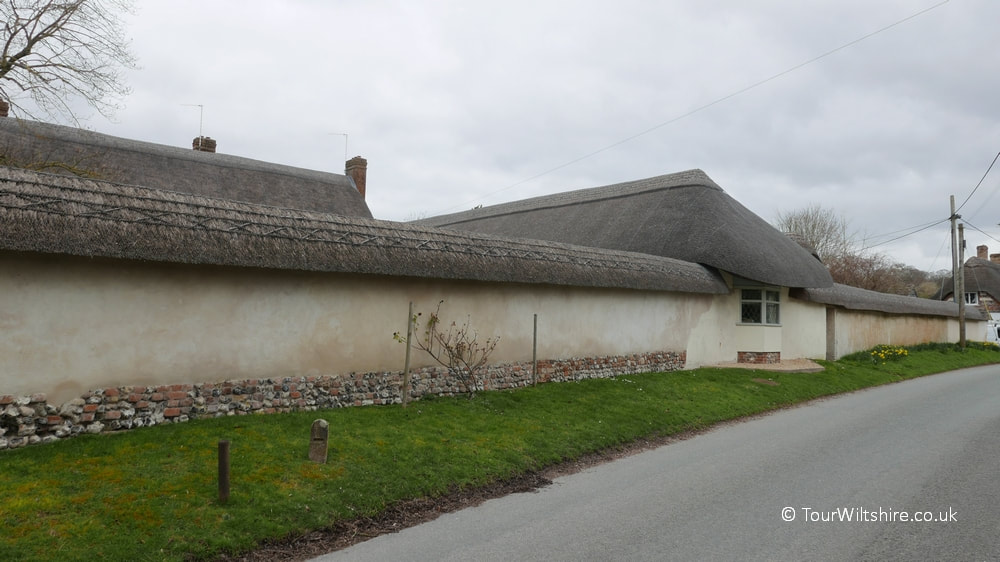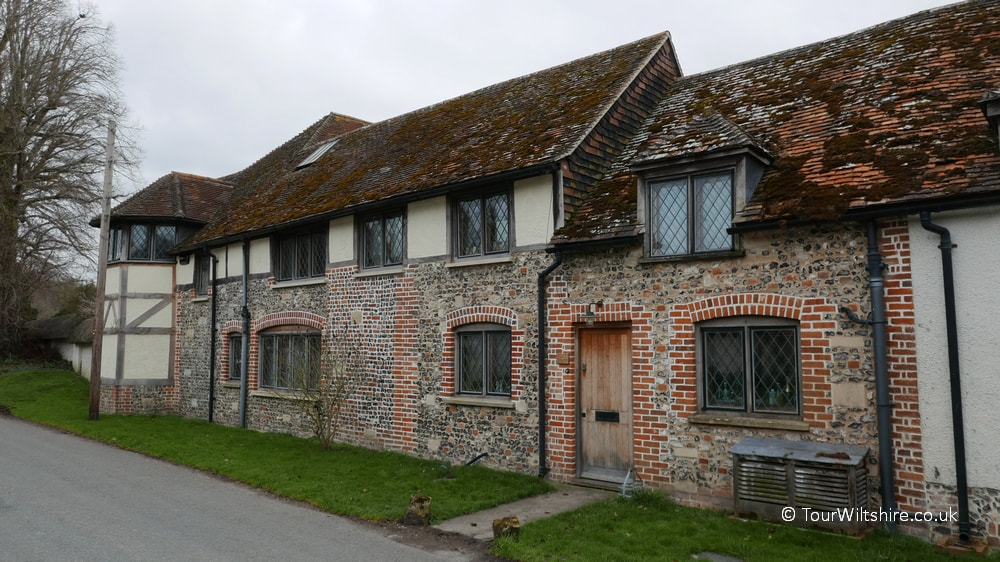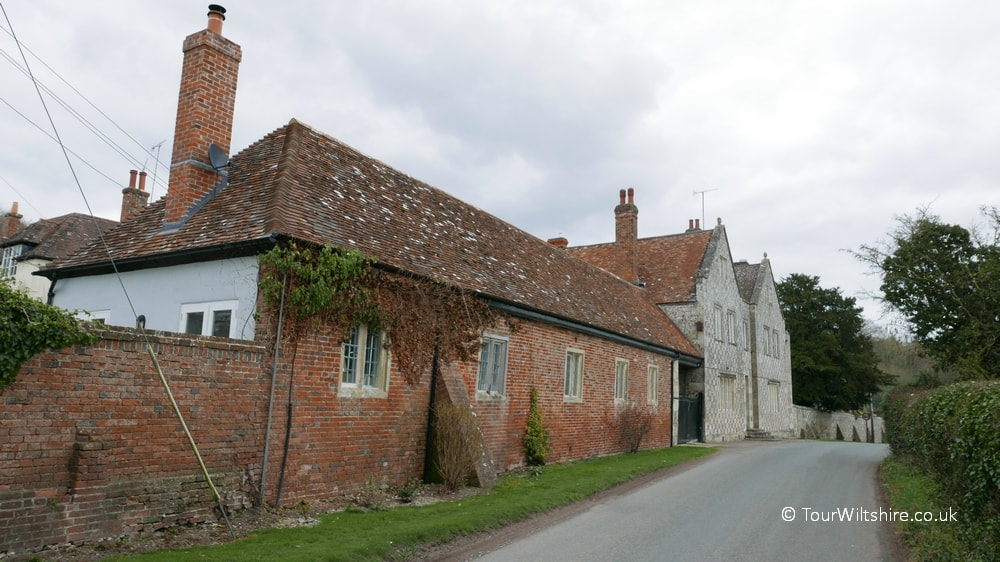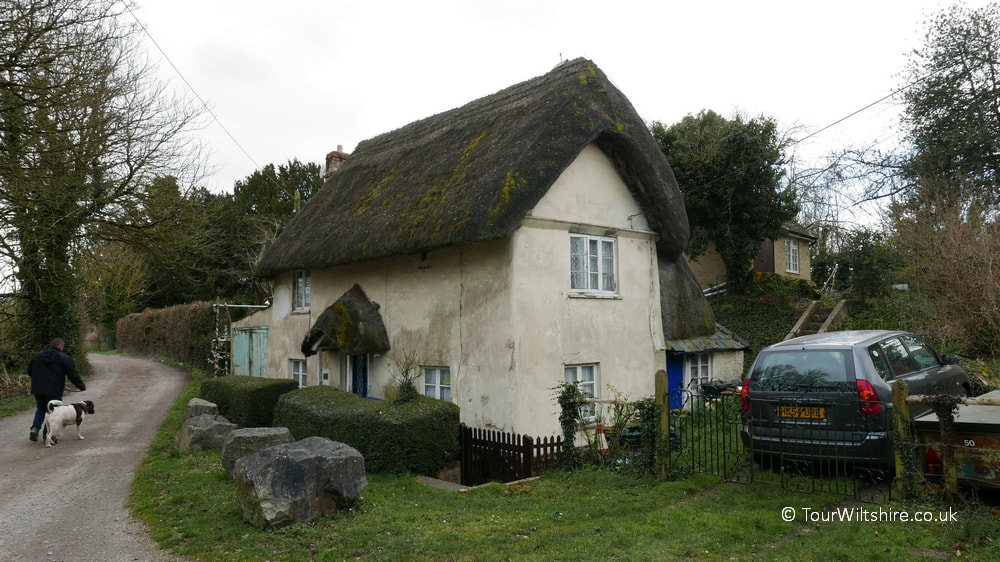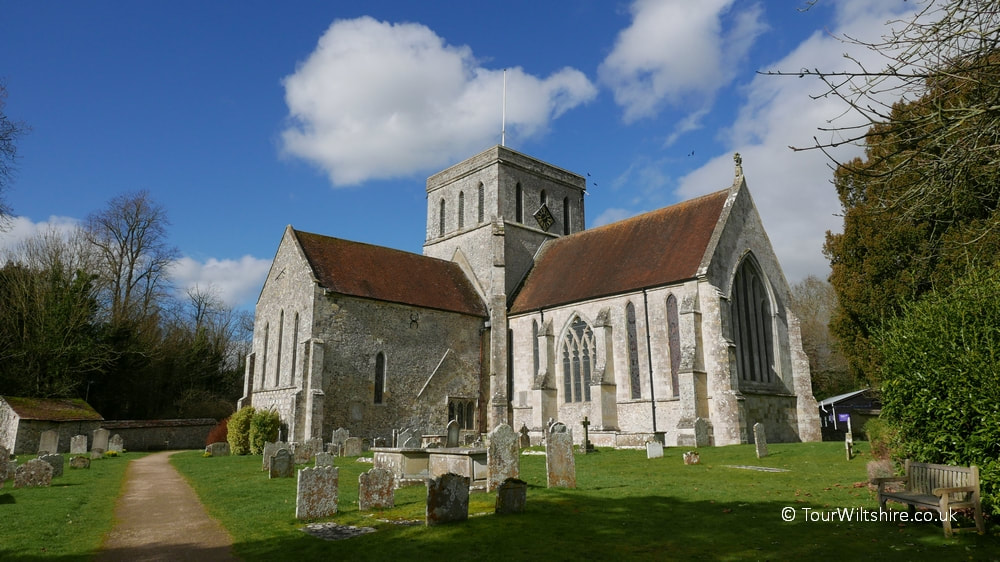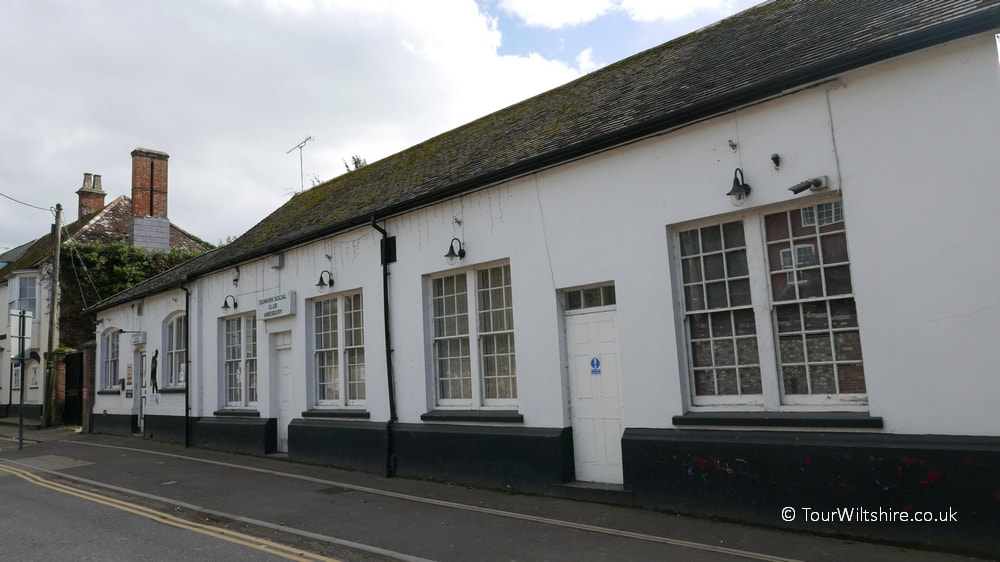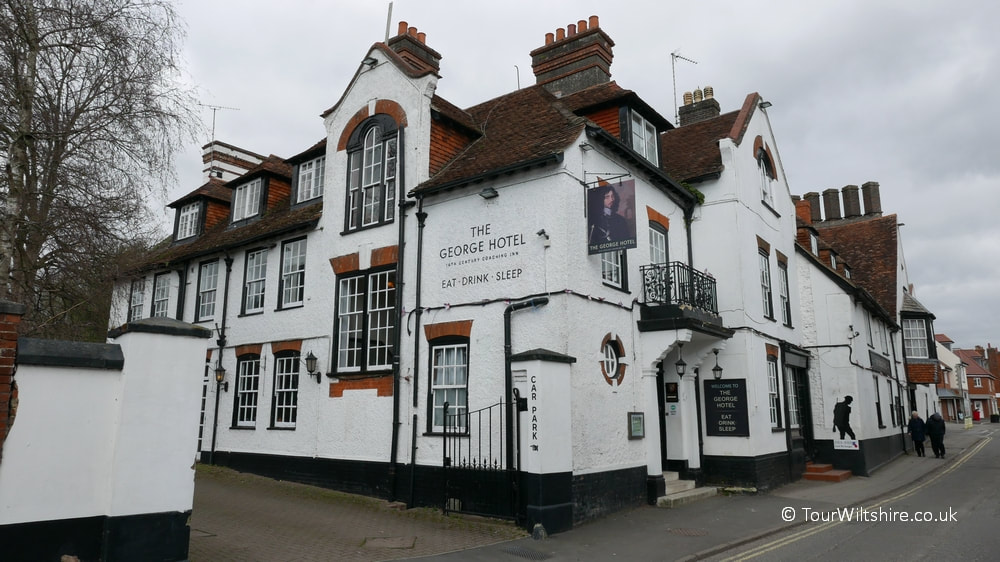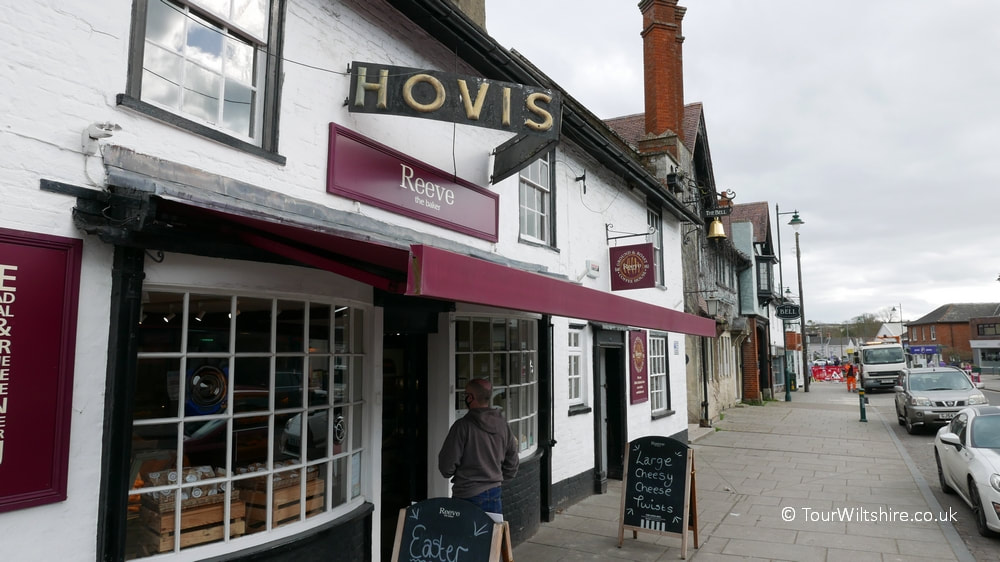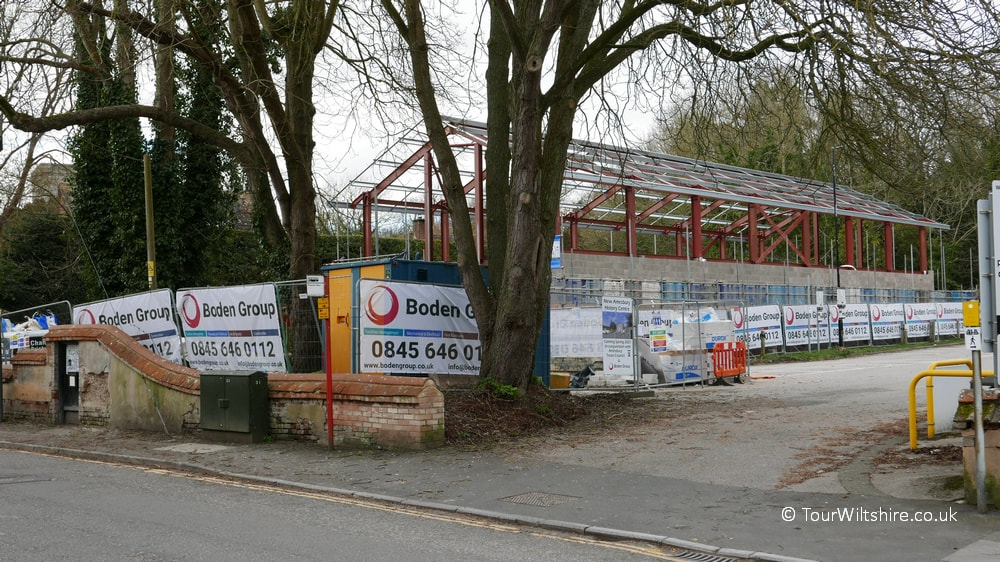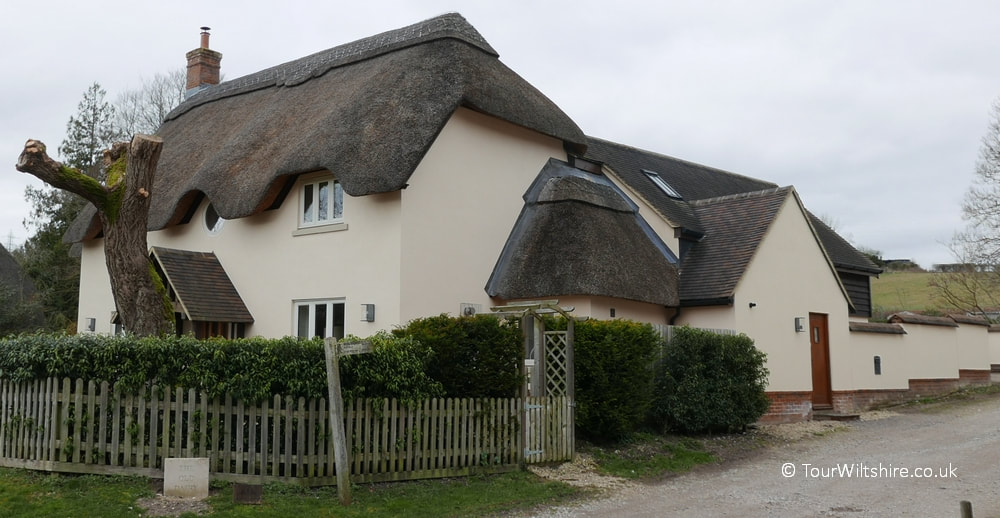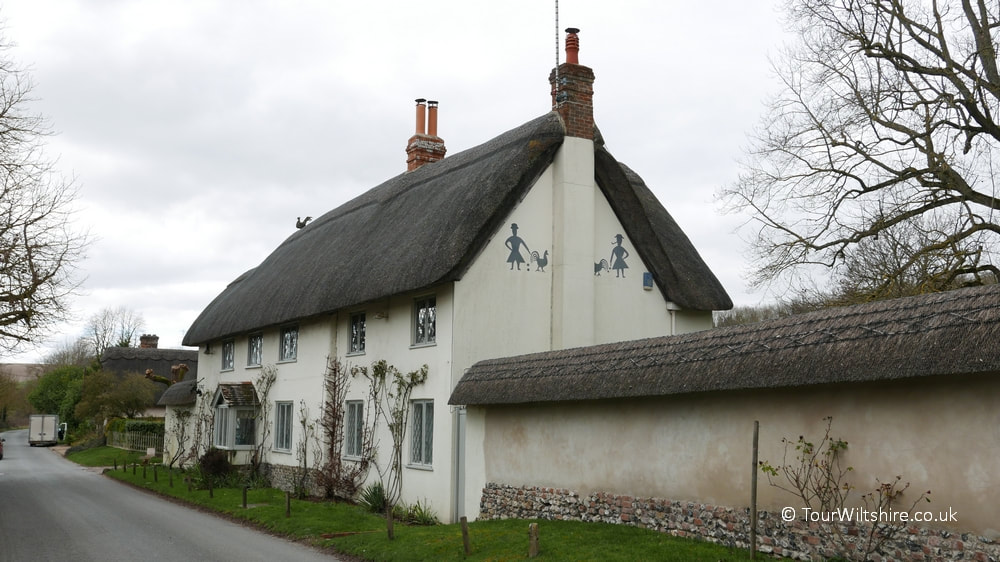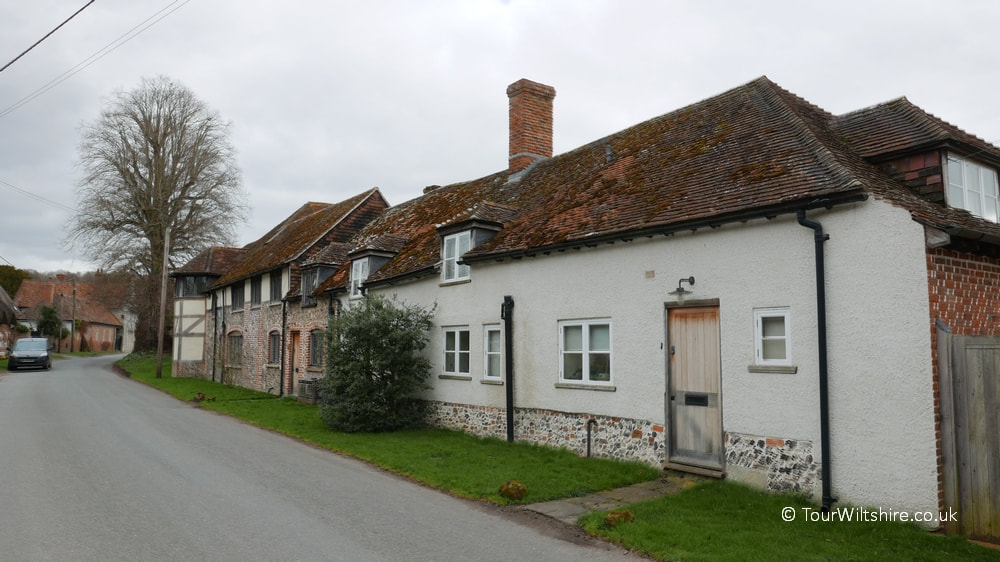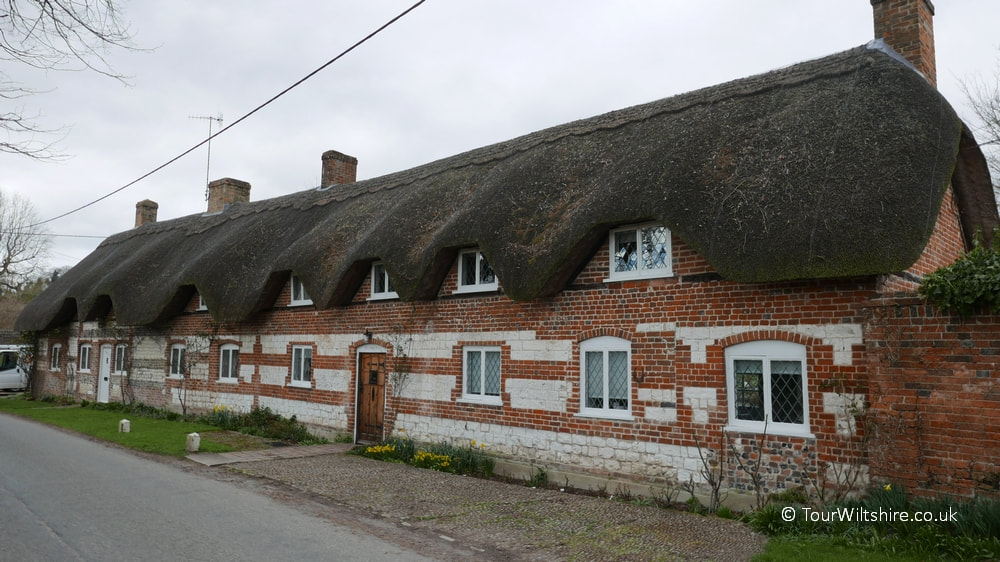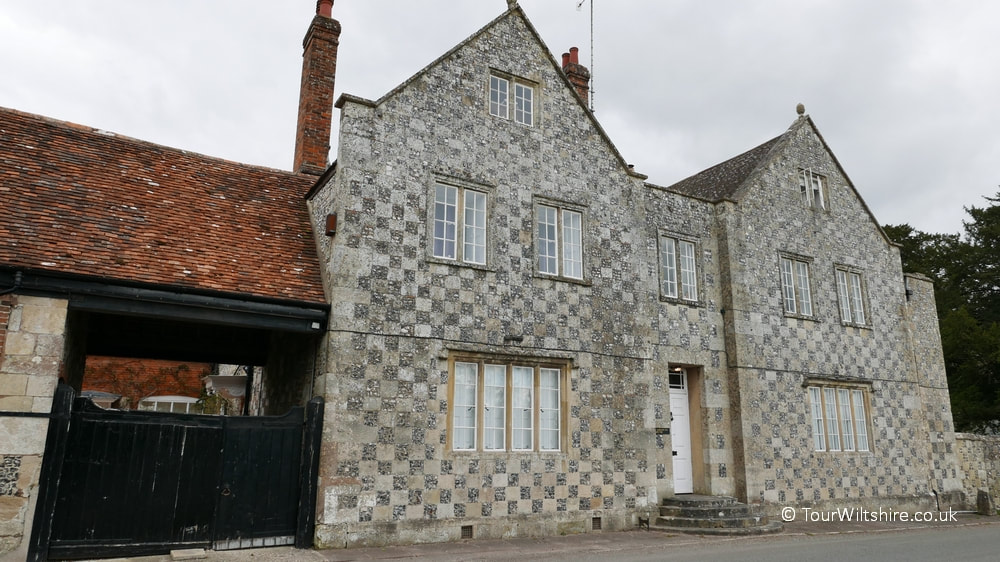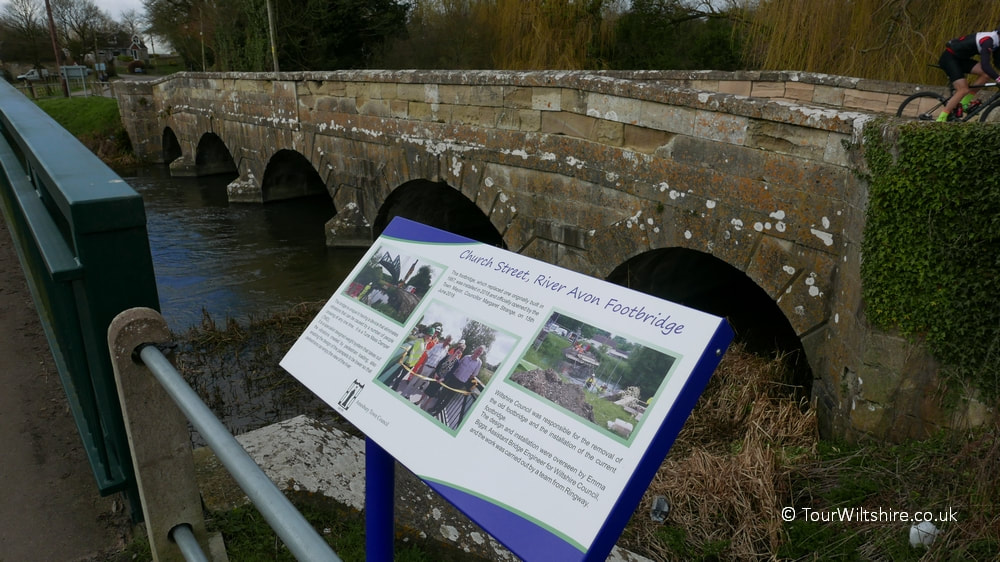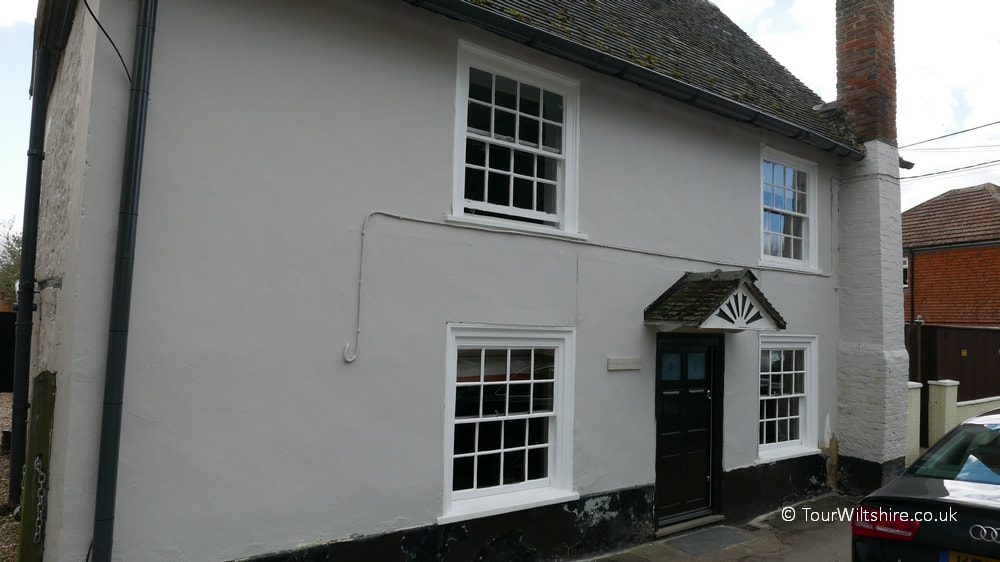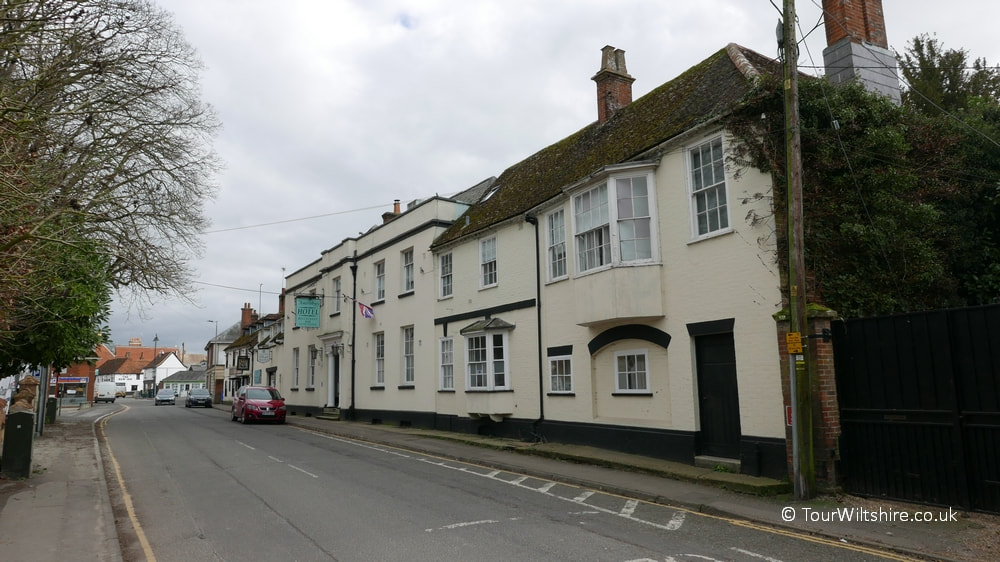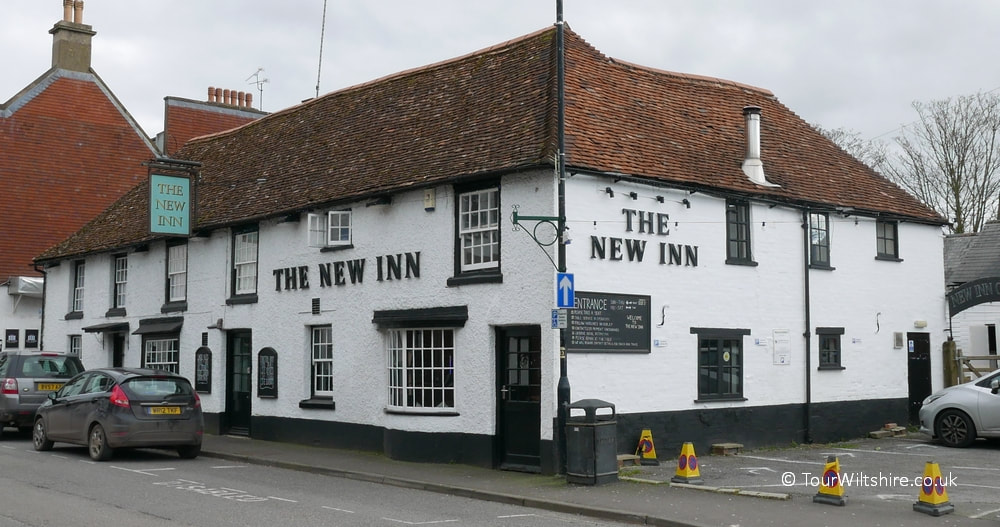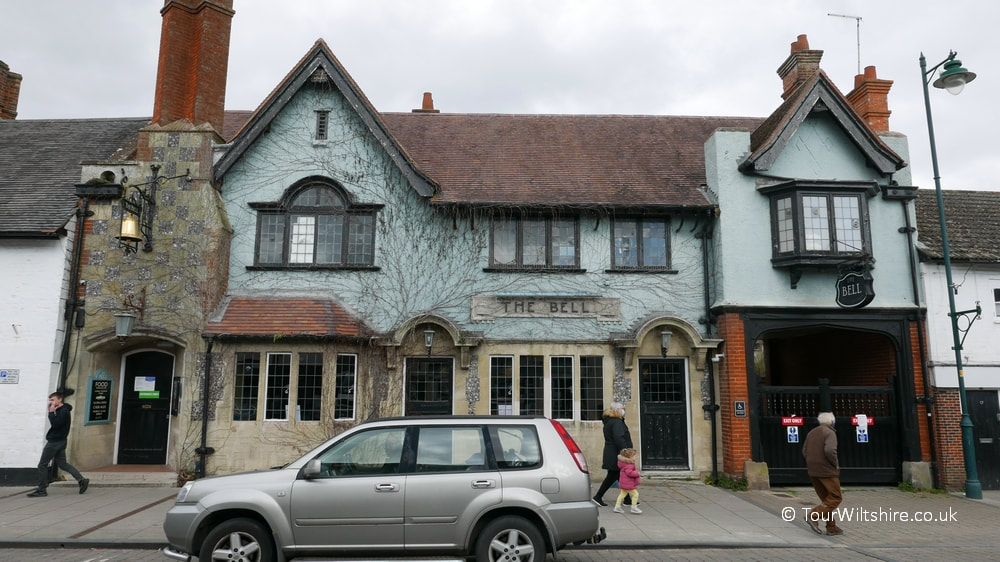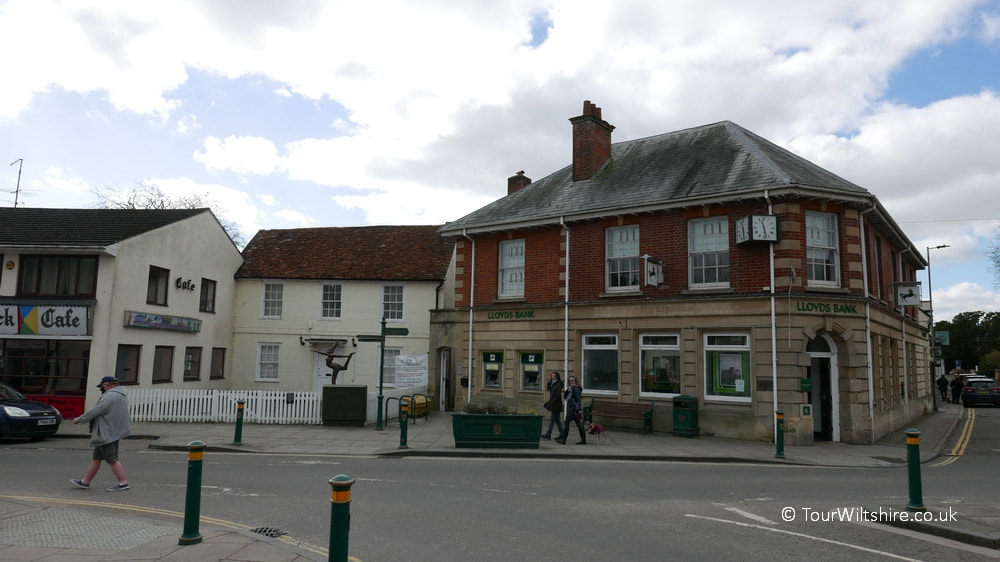⭐⭐⭐
West Amesbury, & Amesbury, Wiltshire
Amesbury is of significant historical interest being the oldest continuous settlement in England and home to the important Abbey Church of St Mary and St Melor.
Starting off in West Amesbury there's an attractive range of thatched houses and cobb garden walls and the 15th century Grade I Listed West Amesbury House, easily identified by its flint and limestone chequerwork. Continue to the end of the road (headed north) and turn right into Stonehenge Road, after a while this becomes Church Street, and passes over the River Avon, there's a convenient additional footbridge. On the left is the Grade I Listed Abbey Church of St Mary and St Melor, dating from 979AD. The Abbey Church of St Mary and St Melor is the most famous of English medieval Monasteries, Queen Eleanor of Provence was a nun here from the death of her husband Henry III and is buried in front of the High Altar. The, also Grade I Listed, house Amesbury Abbey, built in 1834, whose parkland entrance is adjacent to the church, is now a private nursing and independent living facility, and not visible to the casual visitor to Amesbury.
Continuing along Church Street and then directly into High Street you will find the attractive New Inn, on the right, and the George Inn, built in 1560, on the left, along these two streets are the bulk of the other Listed buildings in Amesbury.
Amesbury has the full range of shops, including a Tesco Superstore, and amenities that one would expect of a small town if about 28,000 people, the usual being that everything can be found with the exception of a sizeable clothes (other than Tesco's), or electrical shop.
For places to eat in Amesbury please click here
Film/TV Location For: Agatha Christie's Miss Marple: Nemesis (Antrobus Arms Hotel interior and garden for the Golden Boar Hotel)
Starting off in West Amesbury there's an attractive range of thatched houses and cobb garden walls and the 15th century Grade I Listed West Amesbury House, easily identified by its flint and limestone chequerwork. Continue to the end of the road (headed north) and turn right into Stonehenge Road, after a while this becomes Church Street, and passes over the River Avon, there's a convenient additional footbridge. On the left is the Grade I Listed Abbey Church of St Mary and St Melor, dating from 979AD. The Abbey Church of St Mary and St Melor is the most famous of English medieval Monasteries, Queen Eleanor of Provence was a nun here from the death of her husband Henry III and is buried in front of the High Altar. The, also Grade I Listed, house Amesbury Abbey, built in 1834, whose parkland entrance is adjacent to the church, is now a private nursing and independent living facility, and not visible to the casual visitor to Amesbury.
Continuing along Church Street and then directly into High Street you will find the attractive New Inn, on the right, and the George Inn, built in 1560, on the left, along these two streets are the bulk of the other Listed buildings in Amesbury.
Amesbury has the full range of shops, including a Tesco Superstore, and amenities that one would expect of a small town if about 28,000 people, the usual being that everything can be found with the exception of a sizeable clothes (other than Tesco's), or electrical shop.
For places to eat in Amesbury please click here
Film/TV Location For: Agatha Christie's Miss Marple: Nemesis (Antrobus Arms Hotel interior and garden for the Golden Boar Hotel)
Excerpts From The Wiltshire Council Timeline Of Amesbury (scroll)
Circa 3100 BC - Construction of Stonehenge begins
1177 - Nunnery closed by King Henry II and replaced with a priory serving nuns and monks of the Fontevraldine order. The abbey church, the church of St. Mary and St. Melor, is granted to the priory
1186 - A new Priory church and house completed
1291 - Queen Eleanor of Provence is buried at the Priory
Early 1400s - Following disputes between the Prior and the Prioress the Priory reverts to a Benedictine nunnery. The church of St. Mary and St. Melor, previously used by the monks, continues as the parish church.
1540-1542 - Priory dissolved and most of its buildings demolished
1595-1601 - Abbey Mansion built on the site of the Priory
Early 1600s - South Mill, containing 2 water driven corn mills, in operation
1660 - A new Abbey Mansion built by the Seymour family and designed by John Webb in the Palladian style; from this time there is a pillory and cucking stool in the town
Late 1700s - A winnowing machine called the Amesbury heaver invented by John Trowbridge of Amesbury
1837 - The Amesbury Union Workhouse built on South Mill Hill
1922 - Electricity first provided by Amesbury Electric Light Company
1926 - Boscombe Down rebuilt as a bomber station; water mains laid in the town
1927 - Mains electricity cables laid in the town
1927-1929 - The National Trust purchase most of the west half of Amesbury parish
1930 - Workhouse becomes a Public Assistance Institution under the control of Wiltshire County Council
1950s - 314 council houses built
1967 - Workhouse demolished
1979 - Abbey mansion sold and becomes a nursing home
1980 - Church Street, High Street and Salisbury Street designated a conservation area
1984 - Stonehenge designated a World Heritage site
2002 - Excavations for a new housing development to the south of the town unearth burial remains and artefacts of the Amesbury Archer dating from about 2300 B.C.
1177 - Nunnery closed by King Henry II and replaced with a priory serving nuns and monks of the Fontevraldine order. The abbey church, the church of St. Mary and St. Melor, is granted to the priory
1186 - A new Priory church and house completed
1291 - Queen Eleanor of Provence is buried at the Priory
Early 1400s - Following disputes between the Prior and the Prioress the Priory reverts to a Benedictine nunnery. The church of St. Mary and St. Melor, previously used by the monks, continues as the parish church.
1540-1542 - Priory dissolved and most of its buildings demolished
1595-1601 - Abbey Mansion built on the site of the Priory
Early 1600s - South Mill, containing 2 water driven corn mills, in operation
1660 - A new Abbey Mansion built by the Seymour family and designed by John Webb in the Palladian style; from this time there is a pillory and cucking stool in the town
Late 1700s - A winnowing machine called the Amesbury heaver invented by John Trowbridge of Amesbury
1837 - The Amesbury Union Workhouse built on South Mill Hill
1922 - Electricity first provided by Amesbury Electric Light Company
1926 - Boscombe Down rebuilt as a bomber station; water mains laid in the town
1927 - Mains electricity cables laid in the town
1927-1929 - The National Trust purchase most of the west half of Amesbury parish
1930 - Workhouse becomes a Public Assistance Institution under the control of Wiltshire County Council
1950s - 314 council houses built
1967 - Workhouse demolished
1979 - Abbey mansion sold and becomes a nursing home
1980 - Church Street, High Street and Salisbury Street designated a conservation area
1984 - Stonehenge designated a World Heritage site
2002 - Excavations for a new housing development to the south of the town unearth burial remains and artefacts of the Amesbury Archer dating from about 2300 B.C.
|
|

